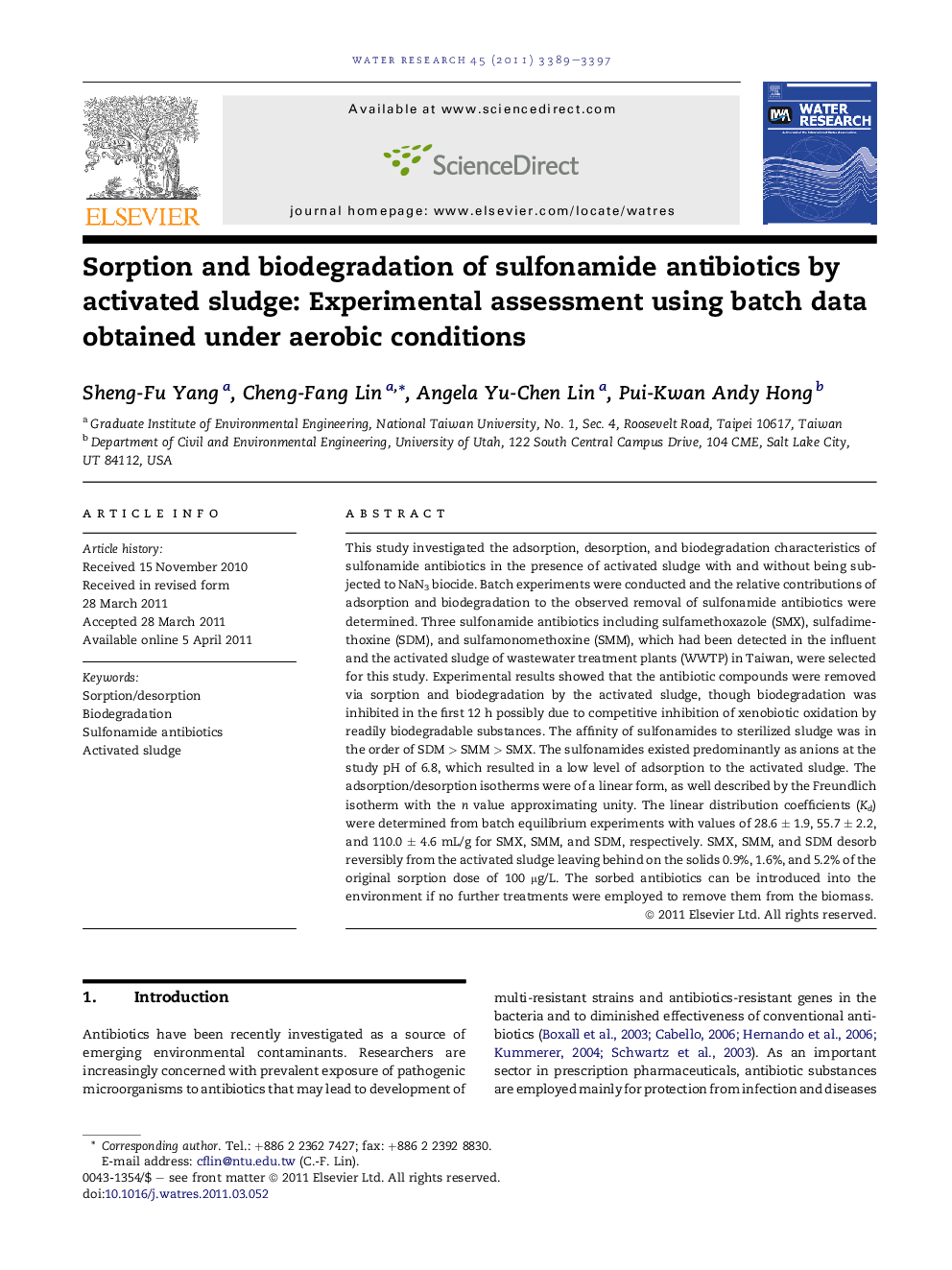| Article ID | Journal | Published Year | Pages | File Type |
|---|---|---|---|---|
| 4483515 | Water Research | 2011 | 9 Pages |
This study investigated the adsorption, desorption, and biodegradation characteristics of sulfonamide antibiotics in the presence of activated sludge with and without being subjected to NaN3 biocide. Batch experiments were conducted and the relative contributions of adsorption and biodegradation to the observed removal of sulfonamide antibiotics were determined. Three sulfonamide antibiotics including sulfamethoxazole (SMX), sulfadimethoxine (SDM), and sulfamonomethoxine (SMM), which had been detected in the influent and the activated sludge of wastewater treatment plants (WWTP) in Taiwan, were selected for this study. Experimental results showed that the antibiotic compounds were removed via sorption and biodegradation by the activated sludge, though biodegradation was inhibited in the first 12 h possibly due to competitive inhibition of xenobiotic oxidation by readily biodegradable substances. The affinity of sulfonamides to sterilized sludge was in the order of SDM > SMM > SMX. The sulfonamides existed predominantly as anions at the study pH of 6.8, which resulted in a low level of adsorption to the activated sludge. The adsorption/desorption isotherms were of a linear form, as well described by the Freundlich isotherm with the n value approximating unity. The linear distribution coefficients (Kd) were determined from batch equilibrium experiments with values of 28.6 ± 1.9, 55.7 ± 2.2, and 110.0 ± 4.6 mL/g for SMX, SMM, and SDM, respectively. SMX, SMM, and SDM desorb reversibly from the activated sludge leaving behind on the solids 0.9%, 1.6%, and 5.2% of the original sorption dose of 100 μg/L. The sorbed antibiotics can be introduced into the environment if no further treatments were employed to remove them from the biomass.
► Assess relative contributions of adsorption, desorption, and biodegradation to observed removal of sulfonamides. ► Biodegradation was the main removal mechanism of sulfonamides in activated sludge. ► Sorption/desorption was reversible and relatively more rapid than biodegradation. ► No suitable treatments deploy, residual sulfonamides a potential risk for the environment.
